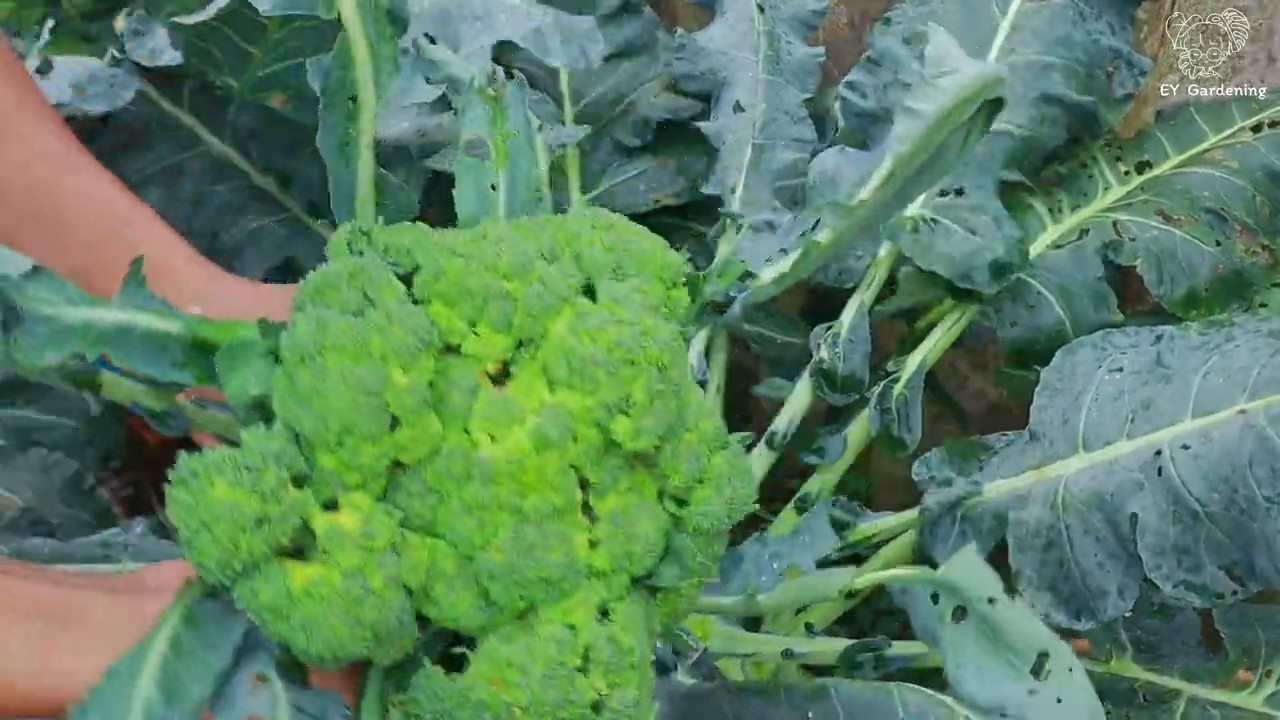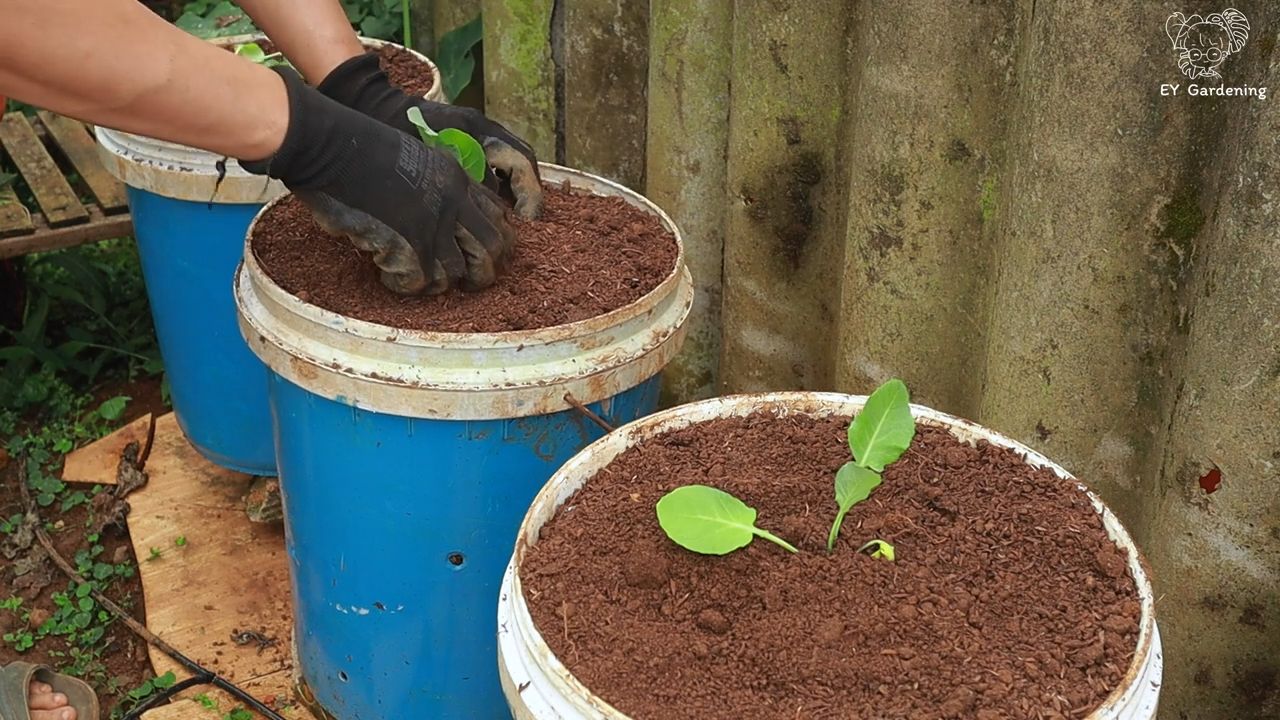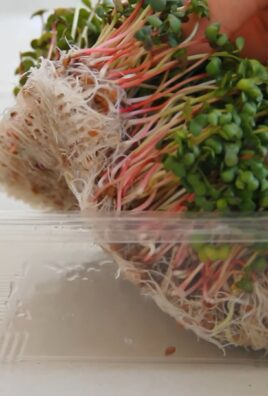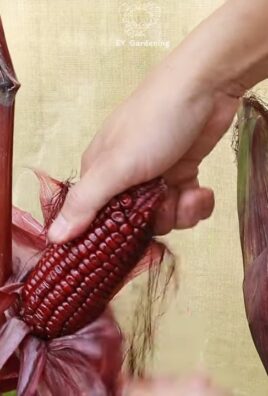Companion Planting Cauliflower Broccoli: Unlock the secrets to a thriving vegetable garden and say goodbye to pest problems and stunted growth! Have you ever wondered how some gardens seem to flourish effortlessly while others struggle? The answer might lie in the ancient practice of companion planting. For centuries, gardeners around the world have observed how certain plants benefit each other when grown in close proximity. This isn’t just some old wives’ tale; it’s a time-tested technique rooted in ecological principles.
Think of it as creating a supportive community within your garden bed. When it comes to cauliflower and broccoli, understanding companion planting cauliflower broccoli is crucial for maximizing your yield and minimizing the need for harmful chemicals. These brassicas, while delicious and nutritious, can be quite demanding and susceptible to pests like cabbage worms and aphids. But fear not! By strategically pairing them with beneficial companions, you can create a natural defense system and boost their overall health.
In this DIY guide, I’ll walk you through the best companion plants for cauliflower and broccoli, explaining exactly why these pairings work. We’ll delve into the science behind it all, exploring how certain plants attract beneficial insects, repel pests, improve soil health, and even enhance the flavor of your crops. Get ready to transform your garden into a vibrant, productive ecosystem where your cauliflower and broccoli thrive like never before!

Der ultimative Leitfaden zur Mischkultur von Blumenkohl und Brokkoli: Ein DIY-Projekt für einen üppigen Garten
Hallo Gartenfreunde! Ich freue mich riesig, euch heute in die Welt der Mischkultur von Blumenkohl und Brokkoli einzuführen. Es ist eine fantastische Möglichkeit, euren Garten zu optimieren, Schädlinge auf natürliche Weise zu bekämpfen und den Ertrag zu steigern. Lasst uns gemeinsam in dieses spannende Projekt eintauchen!
Was ist Mischkultur und warum ist sie wichtig?
Mischkultur ist im Grunde genommen das Anpflanzen verschiedener Pflanzenarten nebeneinander, um voneinander zu profitieren. Einige Pflanzen können Schädlinge abwehren, andere den Boden verbessern oder sogar als Rankhilfe dienen. Für Blumenkohl und Brokkoli kann die richtige Mischkultur einen enormen Unterschied machen.
Warum Mischkultur für Blumenkohl und Brokkoli?
* Schädlingsbekämpfung: Bestimmte Begleitpflanzen können Schädlinge abwehren, die Blumenkohl und Brokkoli befallen, wie z. B. Kohlweißlinge und Erdflöhe.
* Bodenverbesserung: Einige Pflanzen können Nährstoffe in den Boden einbringen, die Blumenkohl und Brokkoli für ein gesundes Wachstum benötigen.
* Platzoptimierung: Durch die strategische Anordnung verschiedener Pflanzen könnt ihr den verfügbaren Platz optimal nutzen.
* Erhöhte Erträge: Eine gesunde und geschützte Pflanze produziert natürlich mehr!
Die besten Begleitpflanzen für Blumenkohl und Brokkoli
Hier ist eine Liste meiner persönlichen Favoriten und warum sie so gut funktionieren:
* Ringelblumen: Diese farbenfrohen Schönheiten sondern ein Sekret aus ihren Wurzeln ab, das Nematoden abwehrt, die den Wurzeln von Blumenkohl und Brokkoli schaden können. Außerdem ziehen sie nützliche Insekten an.
* Kapuzinerkresse: Kapuzinerkresse ist ein wahrer Alleskönner! Sie lenkt Schädlinge wie Kohlweißlinge von eurem Blumenkohl und Brokkoli ab und dient gleichzeitig als Bodendecker.
* Dill: Dill zieht nützliche Insekten wie Marienkäfer an, die Blattläuse fressen. Außerdem soll er die Gesundheit und das Wachstum von Kohl verbessern.
* Rosmarin: Rosmarin hat einen starken Duft, der viele Schädlinge abschreckt, darunter Kohlweißlinge und Kohlfliegen.
* Thymian: Ähnlich wie Rosmarin hat Thymian einen starken Duft, der Schädlinge abwehrt. Außerdem ist er ein guter Bodendecker, der Unkraut unterdrückt.
* Knoblauch: Knoblauch ist ein natürliches Schädlingsbekämpfungsmittel. Sein starker Geruch hält viele Schädlinge fern, darunter Kohlweißlinge, Blattläuse und Schnecken.
* Zwiebeln: Zwiebeln haben ähnliche Eigenschaften wie Knoblauch und können ebenfalls Schädlinge abwehren.
* Salbei: Salbei soll Kohlweißlinge abwehren und das Wachstum von Kohl verbessern.
* Kamille: Kamille zieht nützliche Insekten an und soll das Wachstum von Kohl fördern.
* Spinat: Spinat ist ein guter Bodendecker, der Unkraut unterdrückt und den Boden kühl hält.
* Salat: Salat kann zwischen Blumenkohl und Brokkoli gepflanzt werden, um den Platz optimal zu nutzen. Er wächst schnell und kann geerntet werden, bevor der Kohl zu groß wird.
* Sellerie: Sellerie soll Kohlweißlinge abwehren.
* Rote Bete: Rote Bete lockert den Boden auf und verbessert die Nährstoffaufnahme für den Kohl.
Pflanzen, die ihr vermeiden solltet
Es gibt auch Pflanzen, die ihr *nicht* neben Blumenkohl und Brokkoli pflanzen solltet, da sie sich negativ beeinflussen können:
* Erdbeeren: Erdbeeren können Krankheiten übertragen, die auch Kohl befallen können.
* Tomaten: Tomaten und Kohl konkurrieren um die gleichen Nährstoffe im Boden.
* Kürbis: Kürbis kann den Kohl beschatten und das Wachstum beeinträchtigen.
* Kohlrabi: Kohlrabi gehört zur gleichen Familie wie Blumenkohl und Brokkoli und kann daher die gleichen Schädlinge und Krankheiten anziehen.
Schritt-für-Schritt-Anleitung zur Mischkultur von Blumenkohl und Brokkoli
Jetzt kommen wir zum praktischen Teil! Hier ist eine detaillierte Anleitung, wie ihr eure Blumenkohl- und Brokkolipflanzen erfolgreich mit Begleitpflanzen kombinieren könnt:
Phase 1: Planung und Vorbereitung
1. Standortwahl: Wählt einen sonnigen Standort mit mindestens 6 Stunden direkter Sonneneinstrahlung pro Tag. Blumenkohl und Brokkoli lieben die Sonne!
2. Boden vorbereiten: Lockert den Boden gründlich auf und entfernt Steine und Unkraut. Mischt Kompost oder gut verrotteten Mist unter, um den Boden mit Nährstoffen anzureichern. Ein gut vorbereiteter Boden ist das A und O!
3. Begleitpflanzen auswählen: Entscheidet euch für die Begleitpflanzen, die ihr verwenden möchtet. Berücksichtigt dabei eure spezifischen Bedürfnisse und die Bedingungen in eurem Garten.
4. Pflanzen vorziehen oder kaufen: Ihr könnt eure Blumenkohl- und Brokkolipflanzen entweder selbst vorziehen oder vorgezogene Pflanzen im Gartencenter kaufen. Das Gleiche gilt für eure Begleitpflanzen.
5. Pflanzplan erstellen: Plant, wo ihr eure Blumenkohl- und Brokkolipflanzen und eure Begleitpflanzen anordnen möchtet. Denkt daran, die Pflanzen so zu platzieren, dass sie sich gegenseitig nicht behindern und genügend Platz zum Wachsen haben.
Phase 2: Pflanzen
1. Blumenkohl und Brokkoli pflanzen: Grabt Löcher, die etwas größer sind als die Wurzelballen eurer Pflanzen. Setzt die Pflanzen vorsichtig ein und füllt die Löcher mit Erde auf. Achtet darauf, dass die Pflanzen nicht zu tief sitzen.
2. Begleitpflanzen pflanzen: Pflanzt eure Begleitpflanzen gemäß eurem Pflanzplan. Achtet darauf, dass sie genügend Abstand zu den Blumenkohl- und Brokkolipflanzen haben, um nicht zu konkurrieren.
3. Gießen: Gießt eure Pflanzen gründlich, nachdem ihr sie gepflanzt habt. Das hilft ihnen, sich zu etablieren.
Phase 3: Pflege
1. Regelmäßiges Gießen: Blumenkohl und Brokkoli benötigen regelmäßige Bewässerung, besonders während trockener Perioden. Achtet darauf, dass der Boden feucht, aber nicht nass ist.
2. Düngen: Düngt eure Pflanzen regelmäßig mit einem ausgewogenen Dünger. Befolgt die Anweisungen auf der Verpackung.
3. Unkraut jäten: Haltet euren Garten frei von Unkraut. Unkraut konkurriert mit euren Pflanzen um Nährstoffe und Wasser.
4. Schädlingskontrolle: Überwacht eure Pflanzen regelmäßig auf Schädlinge. Wenn ihr Schädlinge entdeckt, bekämpft sie mit natürlichen Methoden wie z. B. Neemöl oder Insektizidseife.
5. Mulchen: Mulcht euren Garten mit Stroh, Holzhackschnitzeln oder anderem organischen Material. Mulch hilft, den Boden feucht zu halten, Unkraut zu unterdrücken und den Boden zu düngen.
Layout-Ideen für euren Mischkultur-Garten
Hier sind ein paar Ideen, wie ihr eure Begleitpflanzen anordnen könnt:
* Reihenweise: Pflanzt eure Blumenkohl- und Brokkolipflanzen in Reihen und pflanzt eure Begleitpflanzen zwischen die Reihen.
* Kreisförmig: Pflanzt eure Blumenkohl- und Brokkolipflanzen in der Mitte eines Kreises und pflanzt eure Begleitpflanzen um sie herum.
* Gemischt: Pflanzt eure Blumenkohl- und Brokkolipflanzen und eure Begleitpflanzen wahllos durcheinander.
Häufige Fehler vermeiden
* Zu dicht pflanzen: Achtet darauf, dass eure Pflanzen genügend Platz zum Wachsen haben. Zu dichtes Pflanzen kann zu Krankheiten und Schädlingsbefall führen.
* Falsche Begleitpflanzen wählen: Informiert euch, welche Pflanzen gut zusammenpassen und welche nicht.
* Nicht regelmäßig gießen: Blumenkohl und Brokkoli benötigen regelmäßige Bewässerung, besonders während trockener Perioden.
* Nicht düngen: Düngt eure Pflanzen regelmäßig mit einem ausgewogenen Dünger.
* Schädlinge ignorieren: Überwacht eure Pflanzen regelmäßig auf Schädlinge und bekämpft sie rechtzeitig.
Zusätzliche Tipps und Tricks
* Beobachtet eure Pflanzen: Achtet darauf, wie eure Pflanzen auf die Mischkultur reagieren. Wenn ihr feststellt, dass eine bestimmte Kombination nicht funktioniert, ändert sie.
* Experimentiert: Scheut euch nicht, mit verschiedenen Begleitpflanzen zu experimentieren. Jeder Garten ist anders, und was in einem Garten funktioniert, muss nicht unbedingt in einem anderen funktionieren.
* Habt Geduld: Es kann einige Zeit dauern, bis ihr die perfekte Mischkultur für euren Garten gefunden habt. Gebt nicht auf, wenn es nicht sofort klappt.
Ich hoffe, dieser Leitfaden hat euch geholfen, die Grundlagen der Mischkultur von Blumenkohl und Brokkoli zu verstehen. Mit ein wenig Planung und Mühe könnt ihr einen üppigen und gesunden Garten schaffen, der euch mit köstlichem Gemüse belohnt. Viel Spaß beim Gärtnern!

Conclusion
So, there you have it! Mastering the art of companion planting cauliflower and broccoli is not just a gardening trend; it’s a game-changer for your vegetable patch. By strategically pairing these brassicas with their beneficial buddies, you’re not only creating a more vibrant and diverse ecosystem but also actively working to deter pests, improve soil health, and ultimately, boost your yields. Think of it as a natural, organic way to give your cauliflower and broccoli the support system they need to thrive.
This isn’t about complicated formulas or expensive treatments. It’s about understanding the natural relationships between plants and harnessing that knowledge to create a flourishing garden. Imagine harvesting plump, healthy cauliflower heads and vibrant green broccoli florets, knowing that you achieved this success through thoughtful planning and a little help from Mother Nature. The satisfaction is unparalleled.
But don’t just take our word for it. The beauty of companion planting lies in its adaptability. Feel free to experiment with different combinations based on your specific climate, soil conditions, and the pests prevalent in your area. For instance, if aphids are a persistent problem, consider adding more nasturtiums or marigolds to your planting scheme. If you’re struggling with poor soil drainage, incorporating cover crops like clover can help improve soil structure and aeration.
Consider these variations to further enhance your companion planting strategy:
* Succession Planting: Plant your companions in stages to ensure a continuous supply of beneficial effects throughout the growing season.
* Vertical Gardening: If space is limited, explore vertical gardening techniques to maximize your planting area and create a visually appealing display.
* Intercropping: Plant quick-growing companions like radishes or lettuce between your cauliflower and broccoli rows to make the most of available space and suppress weeds.
* Companion Planting for Specific Problems: Tailor your companion planting strategy to address specific challenges in your garden. For example, if you’re dealing with clubroot, consider planting garlic or onions, which have antifungal properties.
The possibilities are endless! The key is to observe your plants closely, learn from your experiences, and adapt your approach as needed.
We wholeheartedly encourage you to give this DIY trick a try. It’s a simple, effective, and rewarding way to improve your gardening skills and enjoy a bountiful harvest of delicious, homegrown cauliflower and broccoli.
Once you’ve experienced the benefits of companion planting firsthand, we’d love to hear about your results! Share your successes, challenges, and favorite companion plant combinations in the comments below. Let’s learn from each other and create a community of thriving gardeners. Your insights could inspire others to embrace this natural and sustainable approach to gardening. So, get your hands dirty, experiment with different pairings, and discover the magic of companion planting! Happy gardening!
FAQ
Q: What exactly is companion planting, and why is it beneficial for cauliflower and broccoli?
A: Companion planting is the practice of planting different crops in close proximity to each other to benefit one or both plants. These benefits can include pest deterrence, improved soil health, enhanced growth, and increased yields. For cauliflower and broccoli, companion planting can be particularly helpful in deterring common pests like cabbage moths, aphids, and flea beetles, as well as improving nutrient uptake and overall plant vigor. Certain companion plants release chemicals into the soil that can suppress weed growth or attract beneficial insects that prey on harmful pests. It’s a natural and sustainable way to create a healthier and more productive garden ecosystem.
Q: What are some of the best companion plants for cauliflower and broccoli?
A: Some of the most effective companion plants for cauliflower and broccoli include:
* Aromatic Herbs: Rosemary, sage, thyme, and oregano repel cabbage moths and other pests. Their strong scents confuse insects and make it harder for them to find your brassicas.
* Alliums: Onions, garlic, and chives deter aphids, cabbage worms, and other pests. They also have antifungal properties that can help prevent diseases like clubroot.
* Marigolds and Nasturtiums: These flowers attract beneficial insects like ladybugs and hoverflies, which prey on aphids and other pests. They also act as trap crops, luring pests away from your cauliflower and broccoli.
* Legumes: Clover, beans, and peas fix nitrogen in the soil, enriching it and providing essential nutrients for your brassicas. They also act as ground cover, suppressing weeds and conserving moisture.
* Dill: Attracts beneficial insects like lacewings and parasitic wasps, which prey on cabbage worms and other pests.
* Radishes: Act as a trap crop for flea beetles, drawing them away from your cauliflower and broccoli. They also loosen the soil, improving drainage and aeration.
Q: How close should I plant companion plants to my cauliflower and broccoli?
A: The ideal spacing depends on the specific companion plants you’re using and their growth habits. As a general rule, plant companion plants within a few inches to a foot of your cauliflower and broccoli. For taller companions like rosemary or dill, allow a bit more space to prevent them from shading your brassicas. Observe your plants closely and adjust the spacing as needed to ensure that all plants have adequate access to sunlight and nutrients. Consider the mature size of each plant when planning your garden layout.
Q: Can companion planting completely eliminate the need for pesticides?
A: While companion planting can significantly reduce the need for pesticides, it may not completely eliminate it, especially in cases of severe pest infestations. Companion planting is a preventative measure that helps create a healthier and more balanced garden ecosystem. In some cases, you may still need to use organic pesticides or other control methods to manage pest populations. However, by using companion planting, you can minimize your reliance on harmful chemicals and create a more sustainable and environmentally friendly garden.
Q: What if I don’t have a lot of space for companion planting?
A: Even if you have limited space, you can still benefit from companion planting. Consider using container gardening or vertical gardening techniques to maximize your planting area. You can also choose compact companion plants like chives or marigolds, which don’t require a lot of space. Even a small amount of companion planting can make a difference in deterring pests and improving the health of your cauliflower and broccoli.
Q: How do I know if my companion planting strategy is working?
A: Observe your plants closely for signs of pest damage or disease. If you notice fewer pests and healthier, more vigorous growth, it’s a good indication that your companion planting strategy is working. You can also monitor the soil health and nutrient levels to see if your companion plants are improving soil fertility. Keep a garden journal to track your observations and make adjustments to your planting strategy as needed. Remember that companion planting is an ongoing process of experimentation and learning.
Q: Are there any plants that should NOT be planted near cauliflower and broccoli?
A: Yes, some plants can inhibit the growth of cauliflower and broccoli or attract pests. Avoid planting these near your brassicas:
* Strawberries: Can attract pests that also affect cauliflower and broccoli.
* Tomatoes: Can stunt the growth of cauliflower and broccoli.
* Mustard: Can attract flea beetles, which can damage your brassicas.
* Rue: Can inhibit the growth of cauliflower and broccoli.
Q: Can I use companion planting in raised beds or containers?
A: Absolutely! Companion planting is just as effective in raised beds and containers as it is in traditional gardens. In fact, raised beds and containers can make it easier to control the soil conditions and manage pests. Just be sure to choose companion plants that are well-suited to container gardening and provide adequate drainage.
Q: Where can I find more information about companion planting?
A: There are many resources available online and in libraries that can provide more information about companion planting. Look for books, articles, and websites that focus on organic gardening, sustainable agriculture, and permaculture. You can also consult with local gardening experts or join a gardening club to learn from experienced gardeners in your area. Experimentation and observation are key to mastering the art of companion planting.




Leave a Comment